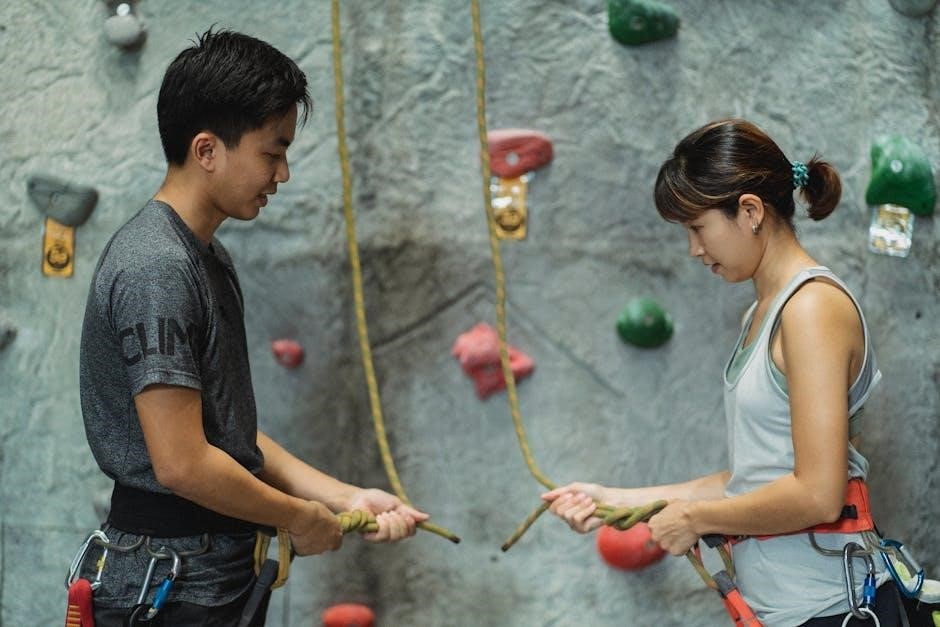Welcome to the world of Lifetime Climbing Domes! This guide provides comprehensive instructions for assembling your new climbing dome. Before you begin, please read through this entire manual carefully. Proper assembly is crucial for ensuring the safety and enjoyment of your climbing dome. Let’s get started!

Lifetime Climbing Domes offer a fantastic way for children to develop coordination, strength, and confidence through active play. These domes are designed with durability and safety in mind, providing a secure and engaging environment for kids to climb, explore, and have fun. Before embarking on the assembly process, it’s essential to familiarize yourself with the components and instructions outlined in this guide.
This comprehensive manual will walk you through each step, from preparing for assembly to ensuring the stability and safety of the completed dome. Remember to check the entire box and inside all packing materials for parts. Detailed instructions are found in the assembly manual, which can be downloaded if needed. By following these instructions carefully, you can create a backyard play structure that will provide years of enjoyment for your children. This dome is easy to build and a solid product.
We’ll cover everything from base frame assembly to handhold installation, addressing common issues and offering troubleshooting tips along the way. Available assembly videos can also aid visual learners. With proper installation and regular maintenance, your Lifetime Climbing Dome will be a cherished addition to your outdoor play area.
Preparing for Assembly
Before you even think about picking up a tool, careful preparation is key to a smooth and successful Lifetime Climbing Dome assembly. Start by choosing a level, well-drained location in your yard for the dome. Clear the area of any obstructions such as rocks, branches, or debris. Adequate space is essential, not just for the dome itself, but also for a safe play zone around it.
Next, take inventory of all the parts included in the box. Compare the contents against the parts list in this manual to ensure everything is present. Familiarize yourself with each component, noting the different types of tubes, connectors, and hardware. Organize the parts in a way that makes them easily accessible during assembly. This will save you time and frustration later on.
Read the assembly instructions thoroughly. Understanding the sequence of steps is crucial for avoiding mistakes. Gather all the necessary tools, which we will detail in the next section. Finally, consider enlisting the help of a friend or family member. Assembly is easier and faster with an extra set of hands. By taking these preparatory steps, you’ll be well-equipped to build a safe and enjoyable climbing dome for your children.
Tools Required for Assembly
Having the right tools on hand will significantly streamline the assembly process of your Lifetime Climbing Dome. The most essential tool is a rubber mallet. This will be used to gently tap the tubes into the connectors without damaging them. Avoid using a metal hammer, as it can dent or crack the plastic components. You’ll also need a socket wrench with appropriately sized sockets to tighten the bolts securely.
A Phillips head screwdriver is necessary for attaching the handholds. A level will ensure that the base frame is perfectly even, which is crucial for the dome’s stability; A tape measure will help you verify dimensions and spacing as you assemble the structure. Work gloves will protect your hands from blisters and scrapes. Safety glasses are also recommended to shield your eyes from debris.
Optional, but helpful tools include a power drill with a socket adapter to speed up bolt tightening, and a step stool for reaching higher sections of the dome. Before starting, double-check that all your tools are in good working condition. With the proper tools readily available, you’ll be well-prepared to tackle the assembly with efficiency and precision.

Parts Identification
Before diving into the assembly process, it’s crucial to accurately identify all the components of your Lifetime Climbing Dome. Begin by inventorying all the parts against the parts list provided in the assembly manual. This will ensure that you have everything you need and prevent any frustrating delays later on. The main components consist of the steel tubes, which form the framework of the dome.
These tubes come in various lengths, so pay close attention to their markings or labels. Next, identify the plastic connectors. These connectors join the tubes together at specific angles to create the geodesic shape. There are usually different types of connectors, such as those for the base, the mid-sections, and the apex of the dome. The hardware kit contains bolts, nuts, and washers, which are used to secure the tubes to the connectors.
Finally, locate the handholds, which provide gripping points for climbing. These handholds typically come with their own set of screws or bolts. Lay out all the parts in an organized manner, grouping similar items together. This will make it easier to locate the correct parts as you follow the step-by-step assembly instructions. Proper parts identification is essential for a smooth and successful assembly.
Step-by-Step Assembly Guide
This section provides a detailed, step-by-step guide to assembling your Lifetime Climbing Dome. Following these instructions carefully will ensure a safe and sturdy structure. Begin by laying out all the identified parts in an organized manner. Refer to the parts list to ensure you have everything needed for each step.
The first step typically involves assembling the base frame. Connect the designated tubes using the appropriate connectors, securing them with bolts and washers. Ensure all connections are tight but not over-tightened. Next, proceed to build the arches that form the dome’s structure. Connect the tubes and connectors according to the assembly diagram, gradually working your way upwards.
As you build the arches, double-check the alignment and stability of the structure. Once the arches are complete, connect them to the base frame, again using bolts and washers. With the frame assembled, it’s time to install the handholds. Position the handholds evenly across the dome’s surface, securing them with the provided screws or bolts.
Finally, conduct a thorough inspection of all connections, ensuring everything is tight and secure. Following these steps meticulously will result in a safe and enjoyable climbing dome for years to come.
Base Frame Assembly
The base frame is the foundation of your Lifetime Climbing Dome, providing crucial stability and support for the entire structure. Careful attention to detail during this stage is essential. Begin by gathering all the parts specifically designated for the base frame, as identified in the parts list. Lay them out on a clean, flat surface, ensuring easy access to each component.
Next, connect the frame segments according to the assembly diagram. Typically, this involves inserting tube ends into connectors and securing them with bolts, washers, and nuts. Ensure that each connection is firm and properly aligned. Tighten the bolts gradually, working your way around the frame to distribute the tension evenly.
As you assemble the base frame, double-check the orientation of each piece, referencing the assembly manual frequently. Incorrect placement of even one component can affect the overall stability of the dome. Once the entire base frame is assembled, inspect all connections once more to ensure they are secure.
Before proceeding to the next step, verify that the base frame is level and sits flat on the ground. Any unevenness at this stage will be amplified as you build the dome upwards. Adjust as needed to ensure a solid and stable foundation for your climbing dome.

Connecting the Arches
With the base frame securely assembled, it’s time to connect the arches that form the dome’s primary structure. This step requires careful coordination and attention to ensure the dome’s structural integrity. Begin by identifying the arch components, referring to the parts list in your assembly manual. Lay them out in an organized manner, making sure you have all the necessary hardware readily available.
Following the assembly diagram, attach the arches to the base frame, connecting them at the designated points. Use the appropriate bolts, washers, and nuts to secure each connection. As you work your way around the dome, ensure that each arch is properly aligned and that the connections are snug but not fully tightened.
As more arches are connected, the dome will begin to take shape. It’s important to maintain symmetry and balance as you proceed. Regularly check the alignment of the arches and make any necessary adjustments. Once all the arches are in place, go back and fully tighten all the connections, ensuring a robust and stable structure.
Pay close attention to the orientation of the arches, as some may have specific placement requirements. Refer to the assembly manual for detailed instructions and diagrams. With the arches securely connected, your Lifetime Climbing Dome is one step closer to completion.
Installing Handholds
Now that the structural frame of your Lifetime Climbing Dome is complete, it’s time to install the handholds that will allow children to safely climb and play. This step is crucial for ensuring the dome’s usability and providing a fun and engaging experience. Before you begin, gather all the necessary handholds and hardware, referring to the parts list in your assembly manual.
The handholds are designed to be attached at specific points on the dome’s frame. Consult the assembly diagram to identify the correct locations for each handhold. Using the appropriate bolts and washers, securely fasten the handholds to the frame. Ensure that each handhold is firmly attached and can withstand the weight of a child.
As you install the handholds, consider the spacing and arrangement. Varying the height and position of the handholds will create a more challenging and engaging climbing experience. However, it’s important to maintain a balance between difficulty and safety. Avoid placing handholds too far apart or in positions that could be difficult to reach.
Once all the handholds are installed, double-check each one to ensure that it is securely fastened and properly aligned. A thorough inspection will help to prevent accidents and ensure that the climbing dome is safe for children to use. With the handholds in place, your Lifetime Climbing Dome is ready for action!
Ensuring Stability and Safety
With the climbing dome fully assembled, the final, and arguably most important, step is to ensure its stability and safety. A stable and safe climbing dome is crucial for preventing accidents and providing a secure play environment for children. Start by thoroughly inspecting all connections, bolts, and hardware to confirm they are tightened and properly secured. Any loose components could compromise the dome’s structural integrity.
Next, assess the ground beneath and around the climbing dome. Ensure the surface is level and free from any obstacles or hazards. If necessary, make adjustments to the ground to create a stable and even base. Consider adding a soft landing surface, such as wood chips or rubber mulch, around the dome to cushion any falls.
Once the dome is stable, conduct a weight test by gently applying pressure to different points on the structure. This will help to identify any weak spots or areas that may require additional support. If you notice any instability, reinforce the connections or consult the assembly manual for troubleshooting guidance.
Finally, establish clear safety rules for children using the climbing dome. Emphasize the importance of responsible play, avoiding overcrowding, and refraining from climbing when the dome is wet or slippery. Regular supervision is essential to ensure that children adhere to these rules and play safely.
Ground Preparation
Proper ground preparation is paramount to ensure the safety and longevity of your Lifetime Climbing Dome. Selecting and preparing the right location will contribute significantly to the stability and overall enjoyment of the product. Begin by choosing a level area in your yard, free from any obstructions like trees, rocks, or underground utilities. A flat surface is crucial for even weight distribution and to prevent the dome from leaning or becoming unstable.
Clear the chosen area of any grass, weeds, or debris. This will not only create a clean workspace but also prevent vegetation from growing up through the dome’s structure. Consider removing the top layer of soil to create a slightly recessed area. This can help contain any cushioning material you might add later, such as wood chips or rubber mulch.
Once the area is cleared, level the ground using a shovel and rake. Pay close attention to any dips or bumps, and fill them in or smooth them out accordingly. Use a level to ensure that the surface is as even as possible. Compacting the soil is also essential to provide a firm foundation for the climbing dome. You can use a hand tamper or a plate compactor to achieve this.
Finally, consider adding a layer of cushioning material around the perimeter of the dome. This will help protect children from falls and create a softer landing surface. Wood chips, rubber mulch, or sand are all excellent options. Be sure to spread the material evenly and maintain a consistent depth for optimal safety.
Maintenance and Inspection
Regular maintenance and inspection are crucial for ensuring the continued safety and longevity of your Lifetime Climbing Dome. These simple steps will help identify potential issues early on, preventing accidents and extending the life of your investment. Start by visually inspecting the dome regularly, at least once a month, for any signs of damage or wear. Pay close attention to the frame, connectors, and handholds.

Check for loose or missing bolts and screws. Tighten any loose hardware immediately to maintain the structural integrity of the dome. Replace any missing hardware with the appropriate replacements, ensuring they are securely fastened. Inspect the handholds for cracks, breaks, or signs of wear. Replace any damaged handholds to prevent injuries.
Clean the climbing dome regularly to remove dirt, debris, and grime. Use a mild soap and water solution and a soft brush to scrub the surfaces. Rinse thoroughly with clean water and allow to air dry. Avoid using harsh chemicals or abrasive cleaners, as they can damage the finish and weaken the materials.
Inspect the ground around the dome for any hazards, such as exposed roots, sharp objects, or uneven surfaces. Remove any hazards to prevent trips and falls. Check the cushioning material, if used, and replenish it as needed to maintain a safe landing surface. Finally, store the climbing dome indoors during periods of prolonged inclement weather to protect it from the elements and prevent rust or corrosion.
Troubleshooting Common Issues
Even with careful assembly and maintenance, you might encounter some common issues with your Lifetime Climbing Dome. This section provides solutions to frequently asked questions and troubleshooting tips to help you resolve problems quickly and efficiently. One common issue is difficulty in connecting the frame sections during assembly. Ensure that all parts are properly aligned and that you are using the correct hardware for each connection.
If you are experiencing resistance, try lubricating the joints with a silicone-based lubricant. Another frequent problem is loose or wobbly connections after assembly. Double-check that all bolts and screws are tightened securely. If the connections continue to loosen, consider using thread-locking compound to prevent them from vibrating loose over time.
Handholds may also become loose or damaged with regular use. Inspect the handholds regularly and tighten or replace them as needed. If the handholds are spinning, ensure that the mounting hardware is properly tightened and that the handhold is securely seated in its designated spot.
In the event of missing parts, contact Lifetime Products customer service for assistance. Provide them with the model number of your climbing dome and a list of the missing parts. They will be able to provide you with replacement parts or guide you through the process of obtaining them.
Finally, if you encounter any issues that you are unable to resolve on your own, consult the assembly manual or contact Lifetime Products customer service for further assistance. Their team of experts can provide you with personalized support and guidance to help you get your climbing dome up and running smoothly.
